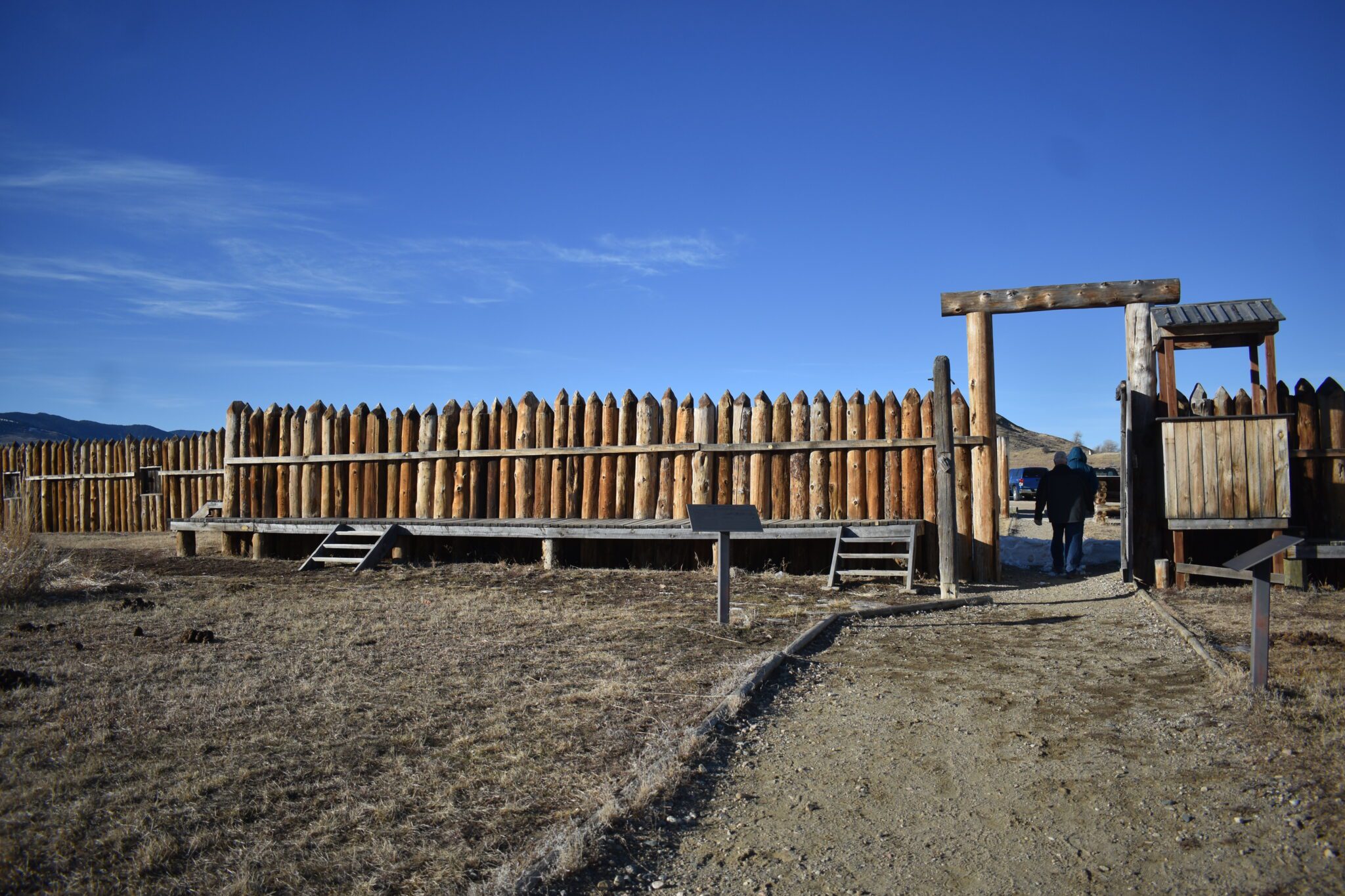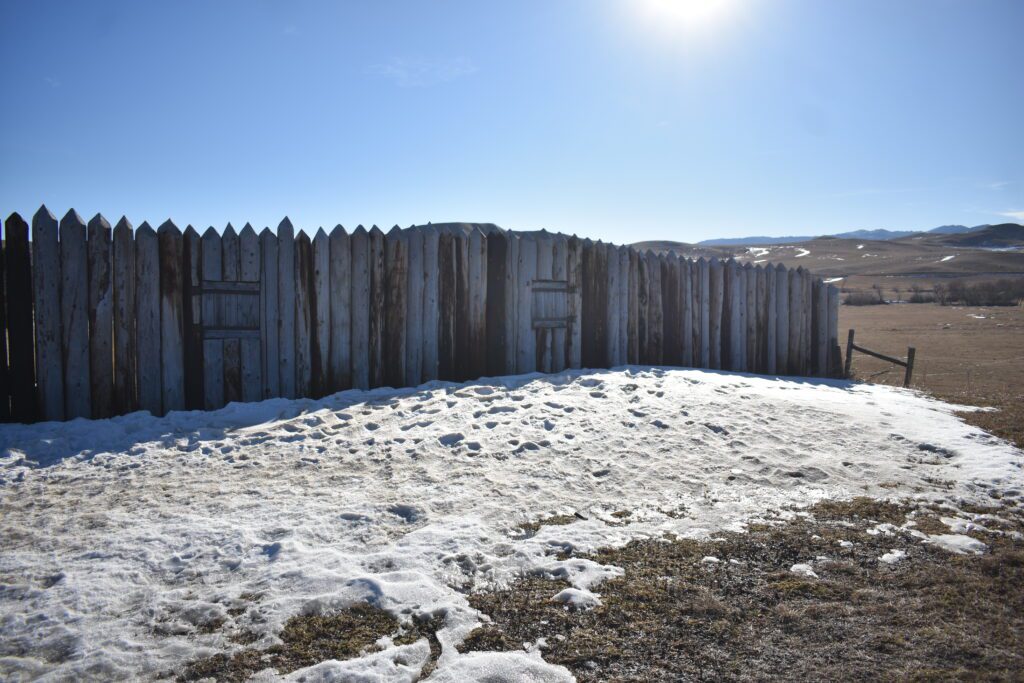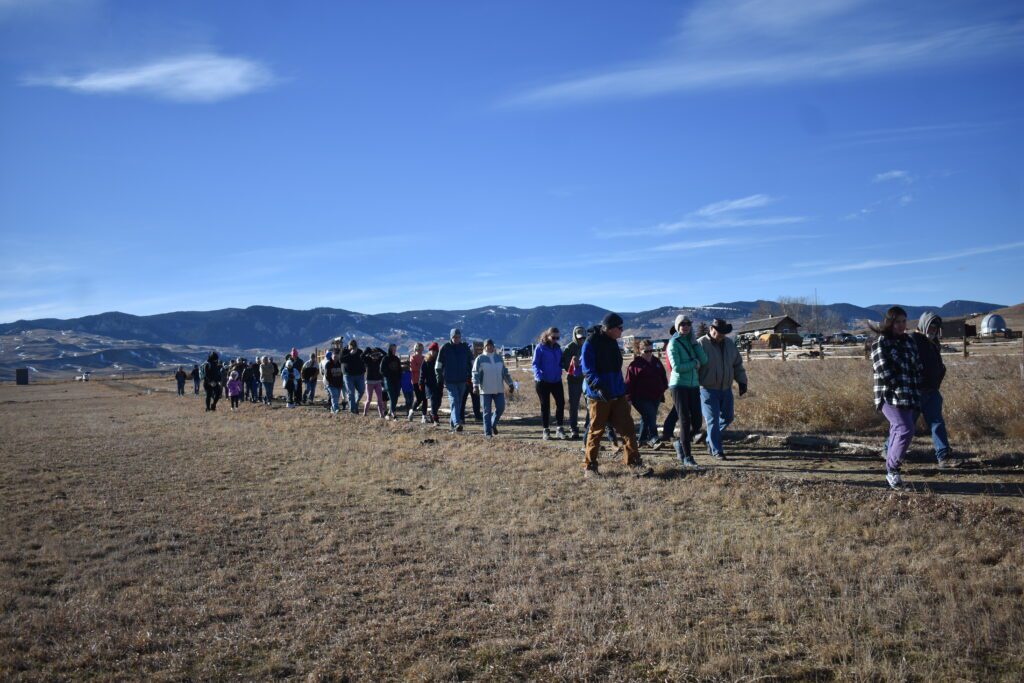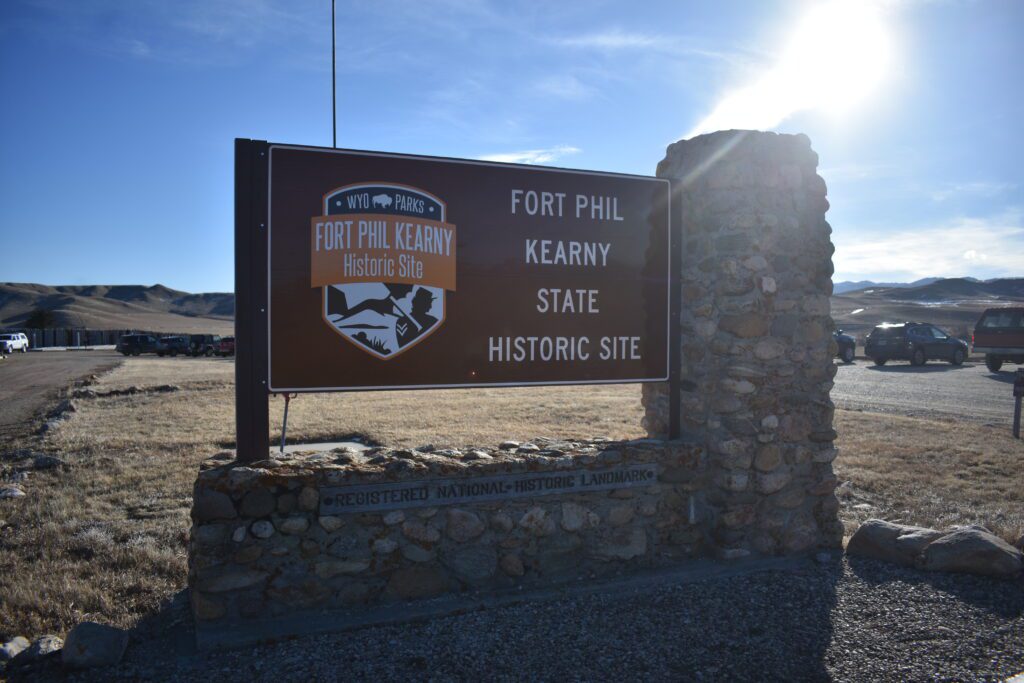News
First Day Hike at Fort Phil Kearny

At 1 p.m. on New Year’s Day, the First Day Hike took place at Fort Phil Kearny. The “First Day Hike” program is a twenty-plus-year-old national initiative designed to encourage not only a healthy and active lifestyle but an appreciation for the nation’s parks and historic sites.
A large crowd attended the event, which started at the Fort Interpretive Center. Sheri Shada, Site Superintendent, led the group to the parade ground. At the first stop, Shada talked about the establishment of the fort,

The fort was build in 1866, and Colonel Henry B. Carrington was the commanding officer. It was the largest of the three Bozeman Trail forts. Shada talked about the soldiers who lived at the Fort.
When they first arrived, emphasis was placed on constructing the stockade and buildings, and not much time was dedicated to training. Unlike the untrained recruits, the officers had served in the Civil War. Officers made about $150 per month, and privates (lowest ranking soldiers) about $16 a month, which in today’s 2023 money equates to $3200 for officers, and $345 for soldiers.

The hospital was necessary for the forts. Constant skirmishes with warriors left numerous injuries, and infections and malnutrition left little chance for healing. Diseases like dysentery (severe diarrhea), scurvy (lack of vitamin C), and tuberculosis (bacteria spread through coughing and sneezing) were rampant because of poor nutrition and sanitation.
One stop was at the band barracks. Most army posts had a band and Fort Phil Kearny was no exception. At the area where the band barracks once stood, Shada talked about the importance of the band at Fort Phil Kearny.
When they weren’t playing music, the musicians were put to work building, and were tasked with building the commanding officer’s quarters.
There was a lookout platform on top of the officer’s quarters where a man would be stationed to receive signals from Pilot Knob. Signals were given using red and white flags and a series of gestures, to report on what they saw from there.

One stop on the tour was the guard house, or jail. Soldiers could be arrested for stealing, deserting, burglary, larceny, asleep at post, drunkenness. Civilian contractors who refused to work could also be jailed.
There were cavalry barracks and horse stables as well at the fort. The cavalry didn’t arrive at Fort Phil until November of 1866, five months after the fort was established. On average, the cavalry men were taller than their infantry counterparts, had higher levels of skilled labor backgrounds, and more military experience.
The lower stockade contained blacksmith and wagon shops, some civilian quarters, hay storage, another commissary warehouse, access to the wagon park outside of the stockade, and access to the watering corral for mules along the creek.
The group circled back to the upper stockade, where there was the quartermaster’s office. The quartermaster was in charge of all the military supplies at the fort, both with what was issued to soldiers as weapons, bedding, etc., and with commissary rations like canned food, candles, tobacco, and soap. Five warehouses were built to store everything, with enough space to store 117,000 cubic feet of supplies, which is equivalent to 30 tractor trailers.
There is also the laundress row and the laundress was considered an official position within the Army, and the soldiers paid her to wash and mend their clothes.
Due to the fact that in 1866, there were no towns in the general vicinity of the fort, the Sutler’s Store was an important part of the fort. It sold non-military provided items, such as canned fruits, vegetables, and seafood; weapons, clothing, tobacco, and liquor. The sutler was a civilian contractor who charged expensive prices.
A welcome sight for travelers along the trail was the tall flagpole at the fort, signaling civilization. The U.S. Flag was 20×36 feet, and the flagpole was 124 feet tall- very easy to spot from the Bozeman Trail. The flagpole’s formal dedication was on October 31, 1866.

The band played on the octagonal platform that surrounded the base of the pole. Star Spangled Banner played as the flag was raised, guns shot in salute. At the end of the ceremony “Hail Columbia” was played as the men marched away.
New Year’s Day was sunny and mild, but very windy at the old fort.

